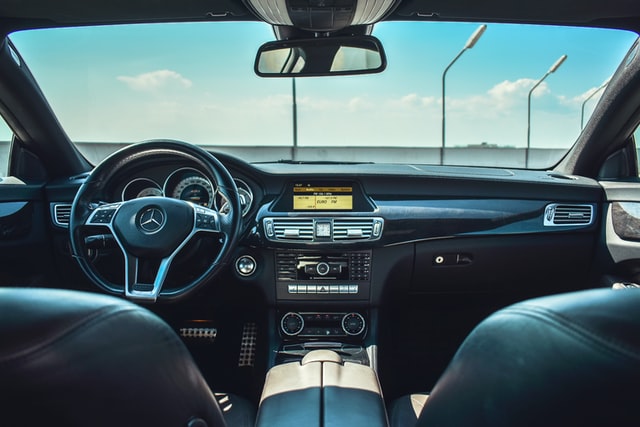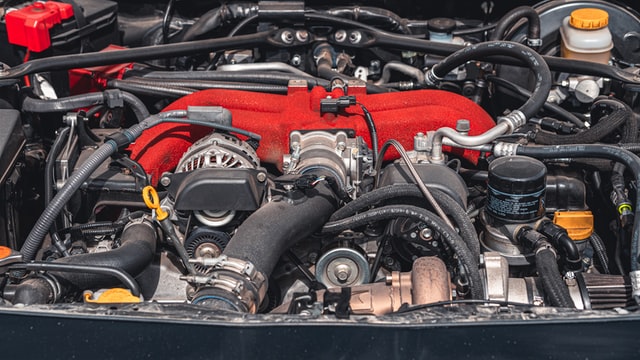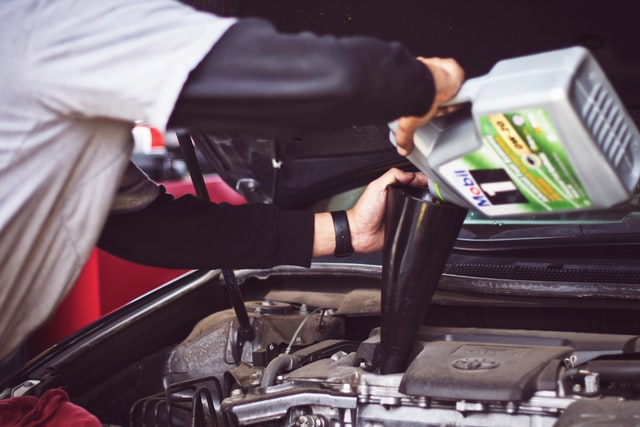Have you bought your first-ever car recently? Or, are you a person who likes to know things about cars? From buying to maintaining your own car, transportation companies, and your fellow drivers, you’re surrounded by cars in more ways than one. Regardless of what type of car person you are, proper maintenance is essential when it comes to vehicles.
You’d be surely surprised how many people are driving cars that aren’t maintained well. These people should stop driving and ask someone else to take their vehicle for a spin. That’s why we have mechanics! This is because you cannot underestimate the importance of proper maintenance.
Are you now motivated to wipe all the dust on your windshield? Let’s start by knowing the reasons why your car looks like it has traveled the whole world.
REASONS WHY A CAR CAN BE WORN OUT FAST

Being aware of your car’s issues and taking care of or fixing them will lead to a longer lifespan for your vehicle. Taking care of your car is a lot like taking care of yourself in so many ways. So if you are not hygienic or not taking properly of yourself, then it’s no doubt that your car will look the same as you.
Going too fast
There are several reasons why you might want to slow down. The engine and the tires are two of the most critical parts of a car. That is why an excessive speed can wear out these parts quickly. A speeding ticket can be challenging to pay off and even more difficult to keep from getting another one. If you speed on the highway with your cruise control on, this could result in a speeding ticket even if you’re not actually driving fast enough that there is any danger involved.
In addition, when driving faster than 75 mph (120 km/h), it takes more energy for your vehicle to move forward because of increased wind resistance. This results in higher fuel costs and less mileage per gallon. It’s easy to see how those factors would lead up to having no money left over after paying off fines or having repairs made after an accident due to reckless driving habits!
Driving on rough roads
Driving on rough roads can also play a role in wearing out your car. It’s not only the bumps and ruts, but also when you drive over them too fast that will cause damage to your vehicle.
The reason is that these small bumps force the wheels to bounce, which increases their rolling resistance and wears out their treads faster than everyday driving would do. This is why driving on gravel roads or any road with lots of bumps should be avoided whenever possible!
Short Trips
Because it’s possible to enjoy the drive without having to worry about how many miles you’re traveling, short trips can be an excellent way to rejuvenate your car. However, there are several reasons why you shouldn’t make them a regular part of your routine:
>>Short trips don’t let the engine heat up enough.
The more you drive, the more moisture is burned off and removed from your engine. This prevents rusting and corrosion that could cause it to wear down faster than average.
>>Oil consumption
Oil is necessary for an engine to run smoothly, but if it doesn’t get hot enough while driving long distances, then it can become viscous or thickened with time. This leads to increased friction between moving parts which results in decreased efficiency and reduced performance over time.
Not Using The Car Enough
If you don’t use your car enough, it will wear out faster. If you can’t afford to drive your car enough, consider renting one from time to time so that it gets used regularly and stays in good shape.
Taking a long road trip every so often is also helpful for keeping an engine running well. It provides plenty of opportunity for everything inside the engine compartment to get shaken up and appropriately lubricated without any problems arising from excessive use during short local trips.
Keeping ‘It in Gear’ When Stopped
If you’re driving a manual transmission, keep your car in neutral when stopped. This will prevent the wear of the clutch and keep it from overheating. If you have an automatic transmission, shift into the park when you are stopped at a light or stop sign or if there’s no one behind you. This keeps the engine idling and can help prevent premature wear of fluid seals inside the transmission.
Avoiding Regular Care
If your car is operating great and you take care of it properly, it will last a long time. Here are some ways to ensure your vehicle’s longevity:
>>Regular oil changes.
To extend the life of your engine and reduce wear on other parts, change out oil at the recommended interval (usually every three months or 7,500 miles).
>>Regular checkups.
Get a tune-up once per year or every 15,000 miles. This will help keep everything running smoothly and avoid significant maintenance costs down the road.
>>Tire rotations & tire pressure checks.
Rotate tires every 5k miles to ensure even wear and avoid blowouts; keep tires inflated between 32-36 psi as low pressure can cause irregular wear patterns as well as increased rolling resistance, which wastes gas mileage while reducing fuel efficiency!
CHECKLIST OF WHEN TO GET CAR MAINTENANCE CARE

Check your owner’s manual.
Before you perform any maintenance on your car, it’s essential to consult the owner’s manual. The owner’s manual will tell you everything from how often to get your oil changed to when you need to change your brake fluid and what kind of coolant system is recommended for your vehicle. It also contains a list of suggested service intervals and reminders that warn you when something could go wrong with the car.
If you have more than one vehicle, it might be beneficial for each owner in the family to have their own copy so everyone can check on their vehicle independently without having to ask permission from anyone else first!
Take note of your car’s features.
As you can see, there are a lot of factors to consider when deciding how often you should get car maintenance. It’s easy to overlook or disregard some of these things if your car is old or has a lot of miles recorded on it, but it’s important not to forget about them. For example, if you drive a compact car and live in the city, the chances are good that your car doesn’t go through as much wear and tear as an SUV would.
Look for warning signs of a car problem.
>>Lights
You can check the dashboard of your car for warning lights that come on when there’s a problem. Look for something out of the ordinary, such as a red battery light, a red oil warning light, and so on. If you see any, ask yourself why they’re there and if they’re normal in the context of what you’ve been doing with your car recently.
>>Sounds
Listen closely for sounds that mean something might be wrong with your car. This may be an engine knocking or exhaust rumbling strangely outback. After finding the faulty sounds, pay attention to where exactly those sounds are coming from in relation to your ears. If there’s something unusual about them, try checking online or with friends who know about cars to figure out what kind of problem this could signal.
>>Fumes
Smell exhaust fumes from inside the vehicle. If they’re particularly strong at certain times, it could mean something needs fixing soon (but don’t neglect other possible reasons that make sense).
>>Vibrations
Vibrations can signal problems too. Listen carefully while driving over various types of road surfaces to see if any give off weird vibrations when going over them at different speeds or after stopping abruptly or turning corners sharply (this is related but distinct from engine knocking).
Get your brakes checked at least once a year.
You should get your brakes checked at least once a year, but if you drive a lot (such as on the freeway often or in stop-and-go traffic), then it’s vital to get your brakes checked every six months. The brake fluid should be clear and not discolored, so make sure the brakes look clean and rust-free.
If the brakes feel squishy or soft when you push the pedal down, this can indicate problems with the brake fluid level or pads wearing out prematurely. It’s best to have them inspected ASAP so that they don’t cause more damage than necessary later on.
Keep an eye on your engine’s fluids.
Check the coolant level. This is a liquid that keeps your engine from overheating, and it’s essential to check it regularly. You should also check for the oil levels because the oil lubricates the moving parts of your engine, so it has to be maintained at a certain level: not too full or too low.
Aside from these, check for the power steering fluid levels. This fluid helps you turn the wheel quickly when driving, so check this regularly as well! Then, test the brake fluid levels. This is also important for keeping your brakes working correctly when braking or stopping suddenly.
Lastly, check windshield washer fluid levels and make sure they’re adequately filled. This is because you don’t want any water getting in through cracks where wipers can’t reach.
When in doubt, check with a mechanic.
Ask a mechanic if you’re unsure when your next vehicle maintenance appointment is. It’s better to be out of harm’s way than sorry, especially if something seems wrong with your car or its performance. In fact, if you’re having trouble starting or driving your car (or other problems), it pays to get it checked out as soon as possible by an expert.
PROPER CAR MAINTENANCE

In addition to the checklist above, add the following tips below to get the most out of your car.
Check engine oil.
This is the most essential thing you can do to ensure your car’s health, but it’s also one of the most important. As stated above, make sure your car is cool before checking the level. You don’t want hot oil to spill onto you as you’re checking on it!
Once you’re ready, use a dipstick to check how much oil there is in your engine. If it looks like you need more than what’s currently in there (which should be between 1/8th and a quarter of an inch), add some more until it reaches that mark. If there isn’t enough oil in your engine, this could cause severe damage over time. So make sure that if anything looks off when checking this condition out, it gets addressed right away!
Engine oil checklist
Don’t overfill your car with engine oil. While adding more than necessary isn’t harmful per se (it helps keep things clean), doing so means that all those extra drops just sit at the bottom of your vehicle and won’t get used up any time soon. This can lead us to our next point…
Avoid using dirty or discolored fluids. If possible, try not using old-looking fluids because they can cause wear-and-tear issues down the line. Similarly, with mixing different types such as motor oils or transmission fluid. It may work sometimes but usually causes problems sooner rather than later due primarily to differences in viscosity levels between brands which can lead to causing variances within internal temperatures, among other things as well.
Here’s another in-depth tutorial on how to tell if your car needs to change the oil. Click here!
Check for other fluid leaks.
Fluid leaks are a big deal. They can damage your vehicle, which will make it more expensive to fix and maintain in the future. It can also mean that you won’t have a reliable vehicle when you’re traveling or commuting to work. To check for fluid leaks:
Check oil drips on the ground around your car that match the location of any oil filters or drain plugs on your engine block. If you don’t know what those drippings are, ask someone at the local auto shop or dealership if they could point them out to you. They’ll be able to explain what they do and how they work in detail so that you know specifically where they are located on your specific make and model of car because there’s no one-size-fits-all answer here.
Lastly, check coolant levels regularly by checking the condition of its coloration. If it starts looking darker than usual, then something is wrong! Also, be sure not to fill up too much because this could cause additional damage down the road. Instead, just add enough until there are no visible signs leftover before adding anything new into it.
Inspect the battery and clean the terminals.
Wear safety gear when working with any car parts, especially the battery. Clean the terminals on your car’s battery with a solution of baking soda and water. You can also use an old toothbrush to remove the rust-like cover. The baking soda will neutralize corrosion that may have formed on the posts and terminal clamps.
Also, check for damage to the cable connectors or where they attach to the car’s engine block, fender, or chassis. Damaged cables need to be replaced before you put everything back together again. This is because they could cause short-circuiting if not fixed properly.
Check the power steering fluid.
The best time to check the power steering fluid is when the engine is cold. So, please turn off your car and let it sit for a while before checking. Then, open up the hood of your car and look at your power steering reservoir. The level should be somewhere between “2/3” and “Full.” If it’s not, add enough fluid until you reach that mark. Then check again after driving around for a while. This may change things slightly as hot weather can make more fluid evaporate from inside there than colder temperatures do.
Check the coolant level located in the radiator and reservoir.
You should always check your coolant level when the engine is cold. The coolant must cover the radiator cap; if it’s not, add more until it does. Make sure you use the proper type of coolant for your car, and your vehicle’s owner’s manual will tell you what kind of coolant to use.
If your car has an overflow reservoir and you are checking it by removing its cap, be careful not to spill any fluid. This is because this is toxic and can cause injury if ingested or gotten into your eyes. Also, note that some vehicles have sensors that monitor their own levels. Depending on their particular design, they do not need to be checked manually but may require periodic replacement or calibration.
Check windshield washer fluid level.
To check the level of windshield washer fluid, turn on the ignition. Then, look at the side mirror to see if there is a small window with numbers and arrows on it. If there are no bubbles in your windshield wiper fluid reservoir, it may be empty.
To fix this, fill up with water and repeat step 1 until you see a bubble forming in this window. This means that you have enough water in your tank to pump through your wiper blades when you switch them on.
Inspect tires, including the spare tire.
Check your tire pressure with a gauge. Tires that are correctly inflated can help improve gas mileage, handling, and braking effectiveness.
To do this, check the tread depth with a penny test. If you can see part of Lincoln’s head, it’s time for new tires. After that, inspect your spare tire to ensure it is in good condition and properly inflated.
Check the brakes.
You should inspect your brakes at least every three months to ensure that they are working correctly, including the master cylinder, wheel cylinders, hydraulic pistons, calipers, and drums/rotors. The most common time for brake failure is when the vehicle has been driven for an extended period of time with a low or empty reservoir of fluid. Brake systems must be bled often to prevent air from being trapped in them; otherwise, they will not work correctly.
Look for damaged belts and hoses under the hood and replace them as necessary.
Look for damaged belts and hoses under the hood and replace them as necessary. Check all of your fan belts for cracks or loose connections. If a belt is cracked or frayed, it should be replaced immediately.
Make sure that all hoses are flexible and not leaking coolant or power steering fluid. Check for leaks in transmissions by inspecting the transmission oil level regularly, at least once a month. A sign that there is an issue with your transmission could be worn-out gears caused by overheating, internal problems with seals and gaskets, or if you hear strange noises while driving. This can indicate that something has gone wrong within your car’s engine compartment!
BENEFITS OF PROPER CAR MAINTENANCE
Proper car maintenance is an excellent way to avoid repair bills in the future. The following are some of the benefits of proper car maintenance:
✅ It’s cheaper in the long run.
Regularly diagnosing and treating potential problems before they become major ones can save you hundreds or even thousands of dollars over time. You’ll also be able to avoid expensive repairs such as new transmissions and engines, which can cost tens of thousands of dollars!
✅ It keeps your car running longer.
If your vehicle has regular oil changes, tune-ups, and other routine maintenance checkups, it will last longer than if you don’t take care of it properly. Your mechanic may recommend replacing certain parts at specific mileage markers so that parts aren’t worn out prematurely (and less expensively). In addition to keeping your engine healthy for as long as possible, this also helps protect against carbon emissions from vehicles running on dirty fuel, which can cause pollution in our air!
BOTTOM LINE
Everyone who drives a car should follow a proper car maintenance schedule. If you want your car to run smoothly and last a long time, proper car maintenance can make all the difference in the world. Understandably, most people won’t think about the inner workings of their vehicles. That is why it is essential to ask an expert or a car mechanic to explain to you the essential parts of your car to know what you should expect.
With the use of the car maintenance tips listed above, you can ensure the maximum potential of your car as long as you know how to schedule your car maintenance.
